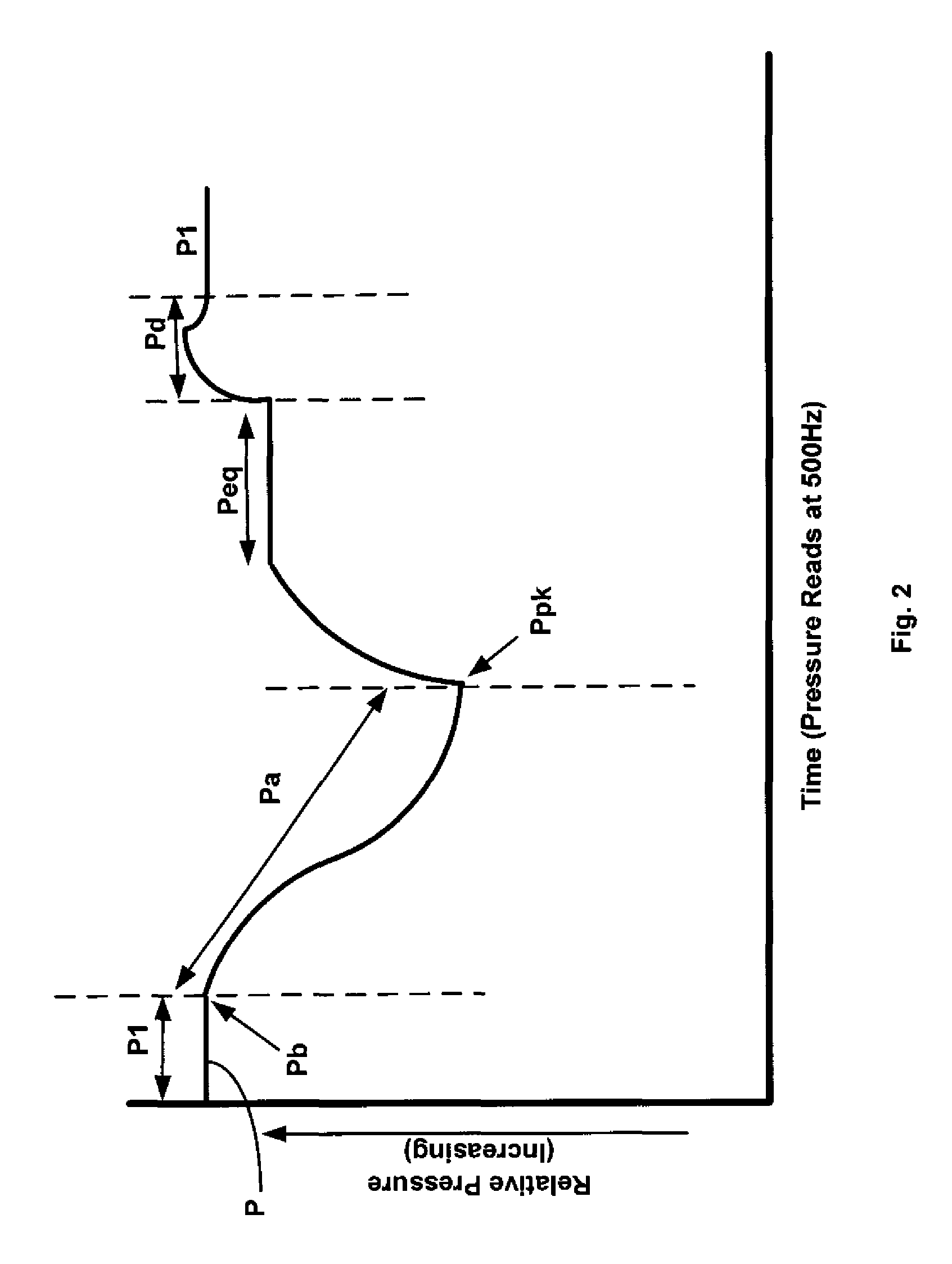Differentiating between abnormal sample viscosities and pipette clogging during aspiration
a technology of abnormal sample viscosity and pipette, which is applied in the direction of fluid-tightness measurement, instruments, machines/engines, etc., can solve the problem of failure of the aspiration process and achieve the effect of lowering the viscosity
- Summary
- Abstract
- Description
- Claims
- Application Information
AI Technical Summary
Benefits of technology
Problems solved by technology
Method used
Image
Examples
Embodiment Construction
[0021]FIG. 1 illustrates a liquid aspirating and dispensing system 10 useful in practicing the present invention which includes a pipette 12 for aspirating and dispensing liquid such as a sample liquid 14 contained in a container 16, like described in co-pending U.S. patent application Ser. No. 11 / 857,922 assigned to the assignee of the present application and incorporated herein by reference. Although one such sample liquid 14 is shown for the purpose of describing the liquid dispensing system 10, it will be apparent to those skilled in the art that any number of sample liquid containers 16 can be present in an automated clinical analyzer like described in co-pending U.S. patent application Ser. No. 11 / 941,204 assigned to the assignee of the present application and incorporated herein by reference, including patents and patent applications incorporated therein by reference and like described in co-pending U.S. patent application Ser. No. 10 / 862,507 assigned to the assignee of the p...
PUM
| Property | Measurement | Unit |
|---|---|---|
| viscosity | aaaaa | aaaaa |
| viscosity | aaaaa | aaaaa |
| viscosity | aaaaa | aaaaa |
Abstract
Description
Claims
Application Information
 Login to View More
Login to View More - R&D
- Intellectual Property
- Life Sciences
- Materials
- Tech Scout
- Unparalleled Data Quality
- Higher Quality Content
- 60% Fewer Hallucinations
Browse by: Latest US Patents, China's latest patents, Technical Efficacy Thesaurus, Application Domain, Technology Topic, Popular Technical Reports.
© 2025 PatSnap. All rights reserved.Legal|Privacy policy|Modern Slavery Act Transparency Statement|Sitemap|About US| Contact US: help@patsnap.com



